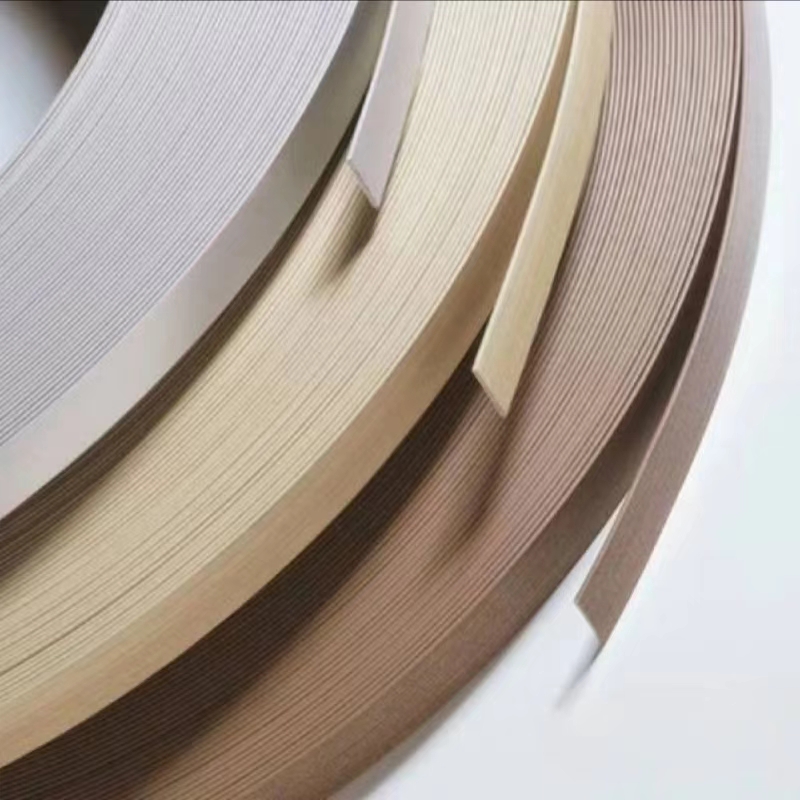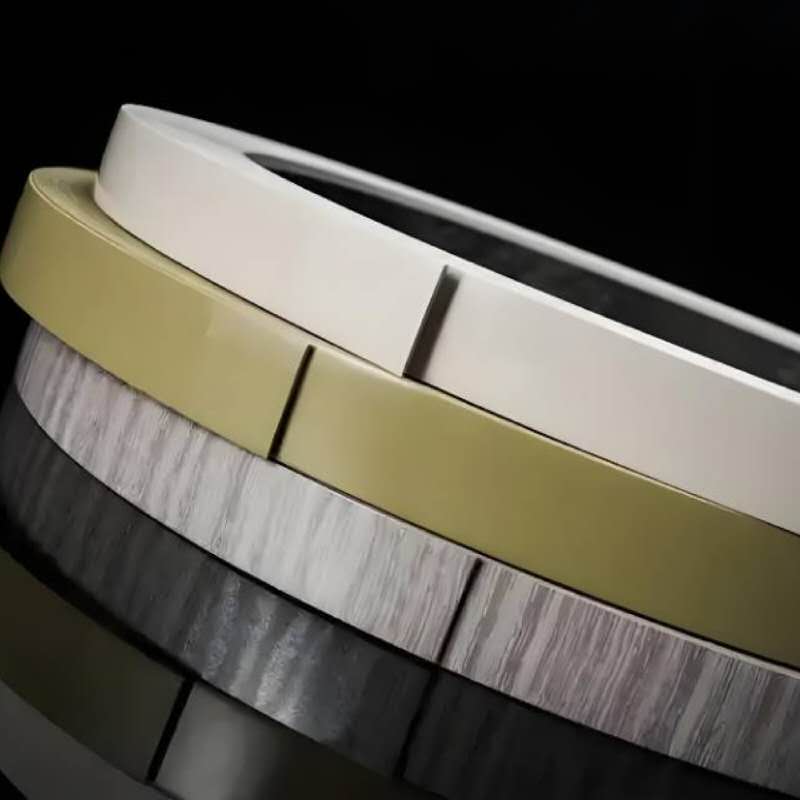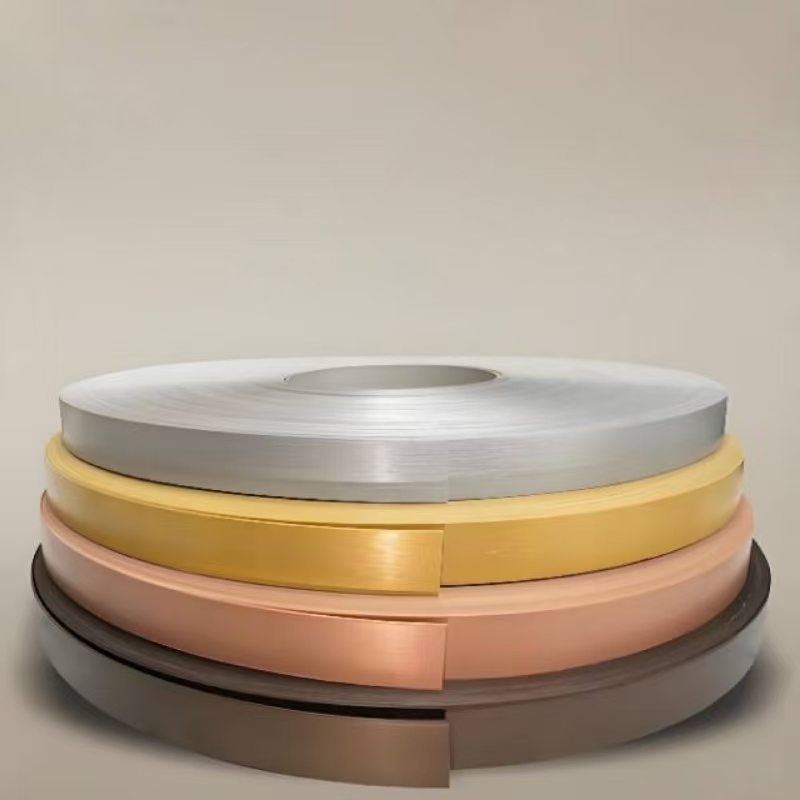PP Edge Banding in the Environmental Wave: Reshaping the Industry's Green Future with Innovative Technology
Against the backdrop of increasingly stringent global environmental regulations, the home building materials industry is undergoing an unprecedented green transformation. The deep integration of TingJie PP edge banding technology and PP material has given birth to PP edge banding—a new material that combines functionality and environmental protection. As an outstanding representative of environmentally friendly materials, PP edge banding leads home decoration materials toward a new stage of green, healthy, and high-quality development with its excellent performance and eco-friendly attributes.
PP edge banding, a prime example of an environmentally friendly material, is a decorative and protective solution for furniture edges. It is meticulously ma nufactured using polypropylene (PP material) as the core raw material through advanced PP edge banding technology. PP material, a high-performance thermoplastic resin, offers significant advantages: it is non-toxic, odorless, chemically stable, and highly recyclable. When compared with traditional PVC or melamine edge banding, PP material stands out by completely eliminating the release of harmful VOCs (such as formaldehyde and benzene) during production, effectively removing the risks of indoor air pollution at the source. The low density and superior physical properties of PP material enable PP edge banding to significantly reduce raw material consumption and energy loss while maintaining product quality, perfectly aligning with the core standards of environmentally friendly materials.
nufactured using polypropylene (PP material) as the core raw material through advanced PP edge banding technology. PP material, a high-performance thermoplastic resin, offers significant advantages: it is non-toxic, odorless, chemically stable, and highly recyclable. When compared with traditional PVC or melamine edge banding, PP material stands out by completely eliminating the release of harmful VOCs (such as formaldehyde and benzene) during production, effectively removing the risks of indoor air pollution at the source. The low density and superior physical properties of PP material enable PP edge banding to significantly reduce raw material consumption and energy loss while maintaining product quality, perfectly aligning with the core standards of environmentally friendly materials.
PP material's unique properties make it an ideal choice for sustainable manufacturing. Its recyclability means that waste generated during the production of PP edge banding can be repurposed, further enhancing its status as an environmentally friendly material.
Between 2023 and 2024, PP edge banding saw its market share surge from less than 10% to 28% thanks to the unique advantages of PP edge banding technology, becoming the preferred choice for many leading home brands. The head of an international home enterprise noted: "Product lines using PP edge banding not only meet all EU EPD standards in environmental tests but also achieved a 40% year-on-year sales growth after launch, proving consumers' strong preference for green products." This rapid market growth underscores the increasing demand for environmentally friendly materials like PP edge banding.
In production, continuous innovation in PP edge banding technology has enhanced PP edge banding's performance. New-generation intelligent production lines achieve precise plasticization and efficient molding of PP material through sophisticated temperature and pressure control systems. The low-temperature hot-melt bonding process reduces carbon emissions, while circular regeneration technology recycles production waste, realizing closed-loop utilization of PP material and practicing the circular economy. These breakthroughs strengthen PP edge banding's core competitiveness as an environmentally friendly material and drive the industry toward intelligence and green manufacturing.
The development of advanced PP edge banding technology has enabled more efficient use of PP material, reducing waste and improving the overall quality of the product. By optimizing the production process, manufacturers can ensure that every piece of PP edge banding meets the highest standards of environmental sustainability and performance.
In application, PP edge banding's excellent flexibility, wear resistance, and weather resistance make it widely used in kitchen cabinets, wardrobes, office furniture, etc. Its diverse surface treatments (matte, high-gloss, wood grain transfer, etc.) adapt to modern minimalist, new Chinese, and European classical styles. Replacing traditional materials with PP edge banding shortens ventilation periods and extends furniture lifespan via scratch resistance. 
PP material's versatility allows it to be used in a wide range of applications beyond furniture. In architectural decoration, PP edge banding can provide a sleek and environmentally friendly finish to interior spaces. In the packaging industry, it offers a sustainable alternative to traditional materials, reducing the environmental impact of product packaging.
However, the industry faces challenges: consumers lack awareness of PP edge banding technology and PP material's environmental advantages, often choosing low-cost traditional products; incomplete industry standards allow some enterprises to cut corners with recycled waste or substandard processes, resulting in uneven product quality and damaging the reputation of environmentally friendly materials.
By focusing on improving the use of PP material, they can create even more advanced and sustainable products. Industry associations need to establish unified quality standards and traceability systems to purify the market. Governments can encourage the use of PP material and other eco-friendly materials through policies, driving industrial upgrading.
PP edge banding technology and PP material will embrace broader development. From home furnishing to industry, PP edge banding is scripting a new chapter in the material revolution with its green and innovative features. PP material will continue to play a pivotal role in defining the future of environmentally friendly materials, leading the way towards a more sustainable and eco-conscious industry.




